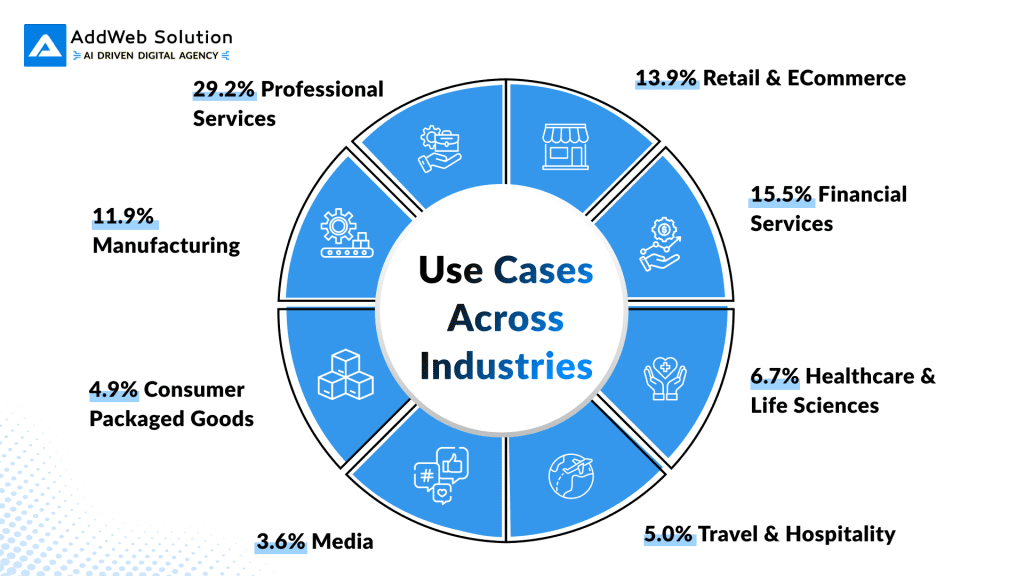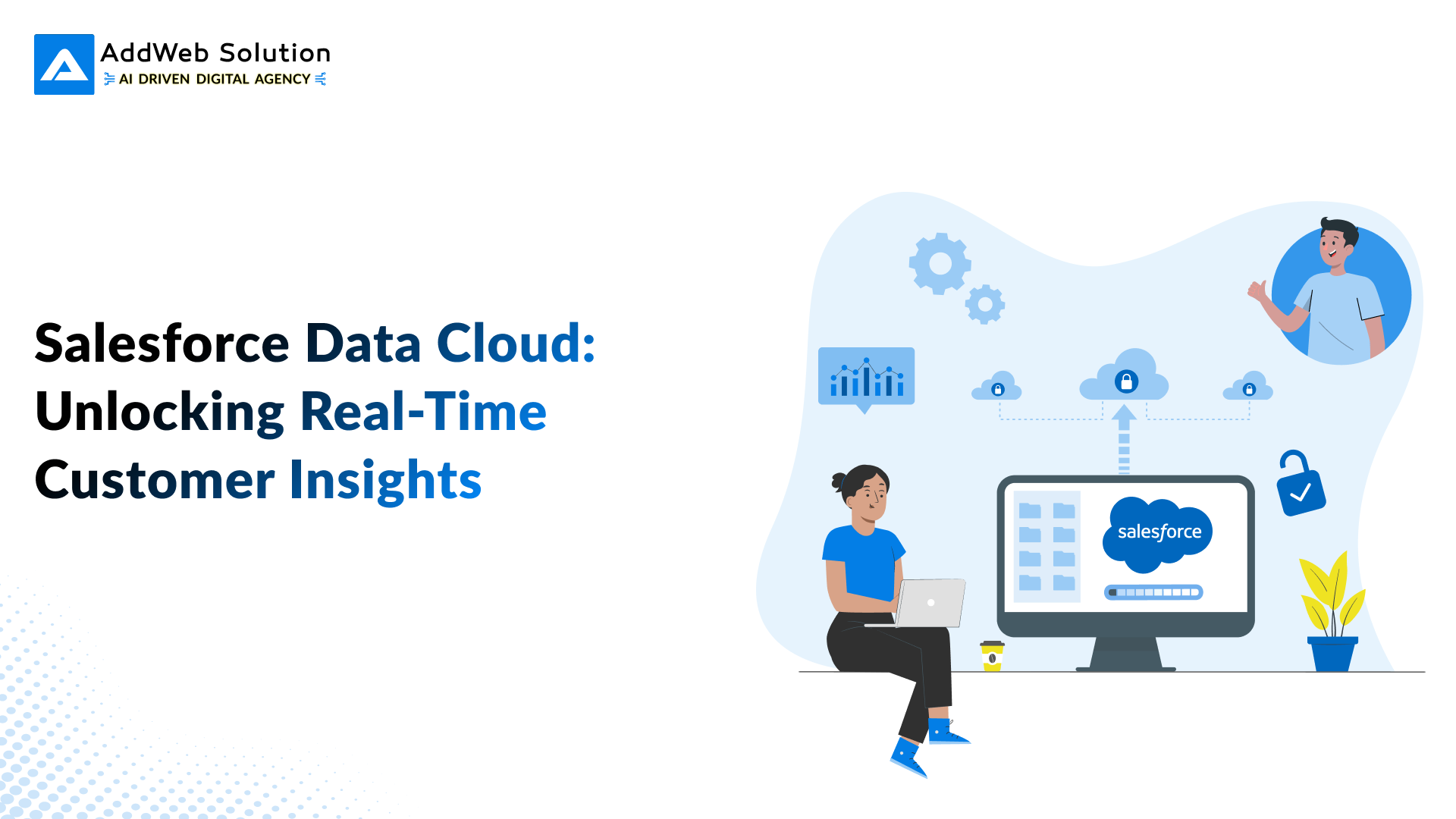From the start, businesses have to become attuned to evolving customer demands and expectations as a result of the swift advancement of technology. In order to maintain competitive positioning in the market, businesses require a solid data infrastructure to keep up with customer expectations for frictionless, timely, and personalized service. To provide these hyper-personalized experiences at scale and in a reliable manner, businesses require profound, real-time insights into customer behaviors across various touchpoints. Salesforce Data Cloud supports businesses in achieving that goal.
Salesforce initially began as a Customer Data Platform (CDP) but has developed over time into Salesforce Data Cloud, enabling businesses to access data across disparate databases and morphed into AI-powered services that companies can tailor to their unique customer-facing needs. The platform converts businesses into customer-centric corporations adept at forecasting customer needs and delivering personalized interactions at every engagement point. The platform transforms businesses into customer-centric organizations that forecast client needs and offer personalized interactions at each touchpoint through a data-driven customer experience.
These are a few of the many customers that stand to benefit from our product and services offered as a solution to their problems. Read on to learn how you can make the most out of Salesforce real-time data, cross-platform data sets, and hyper-personalized engagement.
Who Should Read This Blog?
This blog is focused on capturing the attention of business executives, CRM strategists, marketers, and Salesforce developers who want to take full advantage of the customer data they possess. Any U.S. business considering offshore Salesforce solutions will also get some useful tips. With the advent of hyper-personalized encounters and the requirement for real-time interaction, figuring out how to integrate data from multiple systems manages silos is no longer optional; it is a must. Salesforce Data Cloud provides a revolutionary approach to collecting, aggregating, and activating customer data in real time for enhanced decision-making and outreach. If your goal is to gain more customer-related insights, improve the accuracy with which intelligent data is used, and facilitate growth, read on.
What Is Salesforce Data Cloud?
Salesforce Data Cloud is a contemporary, real-time platform that ingests, unifies, and activates customer data from all sources – both internal and external. Organizations utilize this platform to have a single source of truth about their customers and relate to them meaningfully.
Key Features:
Real-Time Data Ingestion: Salesforce Data Cloud can natively ingest and process customer data from different data sources, enabling businesses to keep up with the latest activity of their customers.
Customer Identity Resolution: It identifies customers’ profiles and identities over multiple touchpoints and platforms, ensuring businesses know who their customers are even when they engage them through different touchpoints.
Data Harmonization: Salesforce Data Cloud helps unify various data types by consolidating numerous sources of structured and unstructured data, creating a complete and coherent single view of every customer.
Integration with Salesforce CRM Apps: Data Cloud integrates seamlessly with other products of Salesforce including Sales Cloud, Marketing Cloud, Service Cloud, etc., thereby providing a complete customer engagement solution.
AI-Driven Insights: Salesforce Data Cloud enables businesses to act on customer needs even before they arise with real-time actionable insights and predictive analytics powered by Einstein AI.
Built on Hyperforce: With the assistance of Hyperforce, Salesforce Data Cloud offers companies enterprise-grade flexibility and security, ensuring their customer information is both adaptable and protected.
The Power of Customer 360
To understand where Salesforce Data Cloud fits in, it’s important to appreciate Customer 360 with a clear focus. Customer 360 serves as Salesforce’s holistic offering that marketers, sells, services, and scrapes data from all available sources (including third-party applications) to create an all-embracing view of each customer.
How Salesforce Data Cloud Powers Customer 360:
Real-Time Data Integration: Salesforce Data Cloud synthesizes a plethora of disparate information, for example, social media, web activity, transactions, customer service data, and many more.
Unification of Customer Profiles: With the continuous live feed of real-time data into the system, Salesforce Data Cloud facilitates consolidation of profiles at any given moment.
Personalization in Depth: Incorporated profiles emanate from Salesforce Development and ERP tools, empowering businesses to administer in-depth personalization strategies.
Through Customer 360, businesses are able to create integrated, relevant, and timely experiences throughout all stages of the customer lifecycle from pre-purchase to post-purchase servicing.
Importance of Real-Time Analytics in CRM Systems
Traditional CRM systems were developed around the analysis of historical data, providing insights into what has occurred in the past. They are, however, unable to take action on the information in real time. This leads to stagnant and reactive business approaches.
In the last few decades, as technology continues to evolve, businesses are gradually discovering the benefits associated with big data, leading to profound changes in marketing practices. The integration of real-time analytics has changed the approach of CRM systems, enabling businesses to understand and interact with customers on a whole new level. Unlike older strategies that rely on analyzing past data, real-time analysis facilitates reacting to dynamic situations. Such immediacy allows teams to counter and give attention to customer interactions such as requests, interests, and actions instantaneously above and beyond what is expected, thus establishing brand loyalty that encourages further engagement.

Mid to Lower Level Management With Tools to Pick Up Real-Time Intelligence
With Salesforce Data Cloud, real-time analytics is taken to an unprecedented level and customer interactions are transformed. Below are reasons for the importance of real-time analytics in modern CRM systems.
Real-Time Analytics in CRM: Why They Are Important
Real-Time Adaption To Client Needs: Customers are given customized offers which can be adjusted in real time to improve customer satisfaction and conversion levels.
Offering solutions to predicted problems: Support teams identify issues and address them proactively sometimes even before the customer is aware. Outcomes are positive customer retention.
Ready Sales Assist: The sales teams can view in real-time what engagements are being conducted with customers and change plans to sustain or increase sales performance.
Dynamic Customer Segments: Create more relevant and effective marketing focused at particular customers by dividing them according to actions they are taking and their position in the processes.
The real time transformation of CRM systems enables businesses to employ proactive measures towards customer relationships instead of reactiveness, while also providing a significant competitive edge in retail, finance, and healthcare services.
Unified Customer Data: Why It Matters
In modern times, customer information is kept in separate systems such as eCommerce, Marketing Automation, Customer Support systems, and POS. This causes silos which hinder one-to-one marketing attempts and leads to inconsistent customer experiences.
Through the Salesforce Data Cloud, a business can have a single view of every customer across all channels and enjoy the benefit brought by unified customer data.
Why Unified Customer Data is Important:
Data and Identity Resolution Cross Social Media and Mobile Apps: Salesforce Data Cloud links customer’s identities across a number of different channels which enables tracking of customer behavior outside the traditional boundaries of in-store interaction, mobile applications and emails.
Customer Interactions Mapping: By integrating multiple data sets from relevant sources, businesses can improve the entire customer journey – starting from the pre-purchase phase and continuing into the post-purchase stage.
Better Marketing ROI: Companies can increase ROI and make marketing more effective by improving communication efficiency at elimination of duplication and reaching targeted segments.
Use Cases Across Industries

Salesforce Data Cloud has a cross-industry application to enhance experiences in real time. Key industries include:
1. Retail & eCommerce
Personalized Discounts: Discounts that are tailored based on actual browsing and purchasing behaviour.
Product Recommendations: Relevant products to be provided when a purchase is being transacted.
Cart Abandonment: Re-targeting of market abandoners with personalized messages that are targeted and motivated to convert them back.
2. Financial Services
Fraud Alerts: Customers are kept in the loop or alert in real time about suspected transactions.
Product Suggestions: Relevant market related products are showcased based on data that is live.
Lifecycle Monitoring: major lifecycle events such as mortgage renewal or insurance policy renewal is monitored.
3. Healthcare & Life Sciences
Appointment Reminders: Re-booking of patients by some time before the actual appointment they are scheduled for.
Personalized Education: Dynamic personalization of educational content on the patient’s medical history and preference.
Health Monitoring: Actively promote behaviours that support patients’ healthy lifestyles for early intervention.
4. Travel & Hospitality
Destination Offers: Making offers at the very moment shoppers are shopping for a certain destination.
Loyalty Points Updates: Advancement in logic and real time updates of loyalty points and travel availed.
Itinerary Revisions: Modification of fringes or entire itineraries takes place based on real world situations, such as weather or cancellations of flights.
5. Professional Services
Project Lifecycle Management: With milestone and deliverable visibility, monitor client project timelines.
Time Tracking & Billing: Time tracking, invoicing, and payment tracking is automated for correct billing.
Client Communication Hub: Foster better collaboration and relationship management with centralized communication across email, calls, and meetings.
6. Manufacturing
Smart Order Management: Streamlined orders from distributors and retailers through real-time status updates and syncing of inventory.
Sales Forecasting: Use historical sales data alongside AI models to accurately predict demand and production needs.
Field Service Automation: Mobile tools, access to inventory, and service histories enable field technicians to resolve issues faster.
7. Consumer Packaged Goods (CPG)
Retail Execution Monitoring: Tracking in-store compliance, product placement, and competitor activity is done through mobile dashboards given to reps.
Data Driven Merchandising: Shopper insights and store data are leveraged for promotional and optimal shelf placement.
Automated Trade Spend Reconciliation: Tracking and reporting ensures that promotional spend and the sales impact are aligned.
8. Media
Omni-Channel Campaign Management: Control and manage content engagement and distribution across social, digital and broadcast mediums.
Subscriber Lifecycle Automation: Subscriptions, engagement, renewals and churn for real time dashboards are tracked with one dashboard.
Multimedia content personalization: Based on behaviour analytics and reviewing/listening history, shows, articles, or music are recommended
Drive Customer Success with Real-Time Data

Pooja Upadhyay
Director Of People Operations & Client Relations
How Salesforce Data Cloud Works (Technical Overview)
To understand how Salesforce Data Cloud works, let us discuss its capabilities and architecture.
1. Data Uploading Step
Sources: Websites, applications, CRM Innovation, ERP systems and other external application programmers interfaces (APIs)
They could be added in real-time, or in intervals for less frequent updating, referred to as batch.
2. Identity Resolution
Figure out a customer’s identity from numerous channels of access by applying Probabilistic and Deterministic approaches.
3. Data Synchronization
Synchronizes information into a model that is uniform everywhere in the system.
Changes to a model depending on the industry, for example, finance or healthcare.
4. Profile Unification
Dynamic customer or client profile is developed from myriad activities or events.
Every new occurrence means that the newest profile is being updated.
5. Segmentation & Activation
Segments on the basis of activities, behavior, demographics and intention.
Sends this information to Salesforce Marketing Cloud, Salesforce Commerce Cloud, Salesforce Service Cloud, among others.
Integration with Other Salesforce Tools
Salesforce Data Cloud works together with other products from Salesforce enabling companies to derive value from their CRM system. Most notable integrations include:
Sales Cloud: Business personnel get live insights of data, enabling the change of sales strategy instantly if need be.
Marketing Cloud: Based on real-time data, use it in-form ultra hyper personalized marketing strategy.
Service Cloud: Context-aware refers to ‘acting’ with the help of up-to-date Salesforce data for serving customers.
Einstein AI: Make use of data stored in records and recommend insightful predictive knowledge.
Examples in Practice: Case Study of L’Oréal
Salesforce Data Cloud enabled L’Oréal to consolidate customer data from in-store purchases, mobile apps, and loyalty programs. With customized solutions provided by GIA’s specialists, L’Oréal was able to leverage relational data to provide customers with real-time tailored skin care recommendations, which further enhanced customer retention along with average order value.
Results: Improved customer experience and enhanced marketing effectiveness.
Challenges and Issues to Consider
As powerful as Salesforce Data Cloud is, proper preparation plans need to be in place prior to implementation. Some of the basic challenges one can encounter include:
Quality of Data: Obtaining accurate data, as well as maintaining it, is the success mantra in regard to Data Cloud.
Governance: Proactive data governance, defined roles, as well as compliance policy should all be in place.
Integration Complexity: It is equally important to take into account planning for legacy systems during the integration, deployment, and planning phase.
Change Management: The new platform should encourage involvement from various departments while providing comprehensive employee training.
Why are Offshore Agencies More Important to the Problem?
Offshore Salesforce agencies offer:
Reasonable Resource Implementation Cost: Initial implementation of Salesforce Data Cloud processes require numerous resources. Service provided by offshore partners prove to be budget friendly while not compromising on quality.
24/7 System Monitoring and Support: Global staff provides 24/7 monitoring and support of the system.
AI and Data Modeling Expertise: Integrate quicker with offshore partners who have detailed experience.
Getting Started: Roadmap to Real-Time Customer Insights
Salesforce Data Cloud rollout ready? Follow this roadmap template:
Audit Your Data: Map out your data’s source, silos, and gaps.
Define Customer Goals: What knowledge do you seek? What customer interactions do you want to facilitate?
Choose Primary Use Cases: Select a primary or secondary most significant use-case, e.g. cart abandonment, service notifications.
Ingest and Unify Data: Employ ingestion functionalities of Salesforce to bring together and integrate your data.
Segment Activation: Begin campaign personalization or sales dashboard creation.
Analyze Results: Optimize for engagement, ROI, and customer sentiment.
Conclusion: The Future of CRM is Real-Time, Integrated, and Intelligent
Salesforce Data Cloud is the future of CRM—unified, intelligent, and in real-time. Through real-time data, Customer 360, and AI insights, companies have the capability to proactively offer smarter, faster, and tailored customer services.
Looking to gain customer insights and elevate your CRM strategy? AddWeb Solution can assist you in implementing Salesforce Data Cloud and optimizing your Salesforce solutions.

Unlock the Power of Data-Driven Decisions

Pooja Upadhyay
Director Of People Operations & Client Relations

